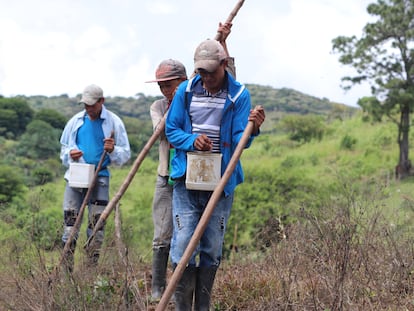Organic farming in the land of agrochemicals
Costa Rica leads the world in pesticide use while a small group of farmers strive to produce chemical-free food to the nation
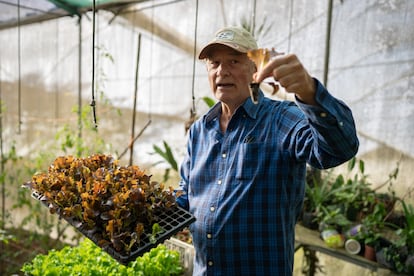

“Hi, I’m Tigre. At your service,” Rodolfo Zamora introduces himself. He’s had that nickname since he was young and takes pride in it. You can see his love of tigers in the paintings, drawings, stuffed animals and other objects found around his farm in Oreamuno, a mountainous area in the province of Cartago, Costa Rica. Zamora and his wife, Hannia, show us around the Rinconcito Orgánico Irazú farm and share the story of how it all came about. The farm sits on a tidy 1.7 acres where they have been growing nearly 70 different crops since 2006. That was the year Tigre decided to leave his bank job and become a farmer.
Tigre and Hannia may seem like just another couple of farmers in an agricultural area, but they actually represent a minority. Tigre points at his neighbor’s land: “It looks healthy and green, but it actually lacks nutrients.” The soil is visibly affected by land erosion. The property line between the two farms marks the boundary between two worlds: organic farming and conventional farming with agrochemicals, which accounts for 98% of the country’s agriculture.
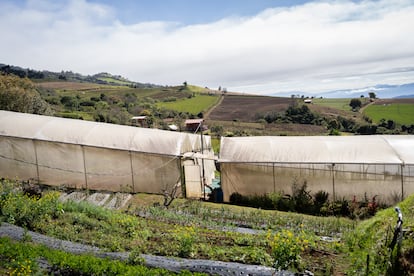
According to the State of the Nation Program, a report prepared annually by Costa Rica’s public universities, organic agriculture makes up 1.9% of the country’s farmed area. To be recognized as organic producers requires certification from the Ministry of Agriculture and Livestock (MAG). Organic farms aim to maximize natural resources through circular agriculture methods: separate sections of a farm are intentionally linked together so that each area helps the other.
Despite its long-standing promotion and commitment to ecological practices, Costa Rica has the highest per-acre pesticide use in the world. According to the U.N. Food and Agriculture Organization (FAO), Costa Rica used an average of 51.5 pounds (23.4 kilos) of pesticide per 2.47 acres (1 hectare).
There is strong evidence of the health risks posed by these products, leading to strict regulations in the European Union. However, Costa Rica still lacks such regulations. Not far from where Tigre and Hannia live, two towns in Cartago province with approximately 10,000 people lost their drinking water in 2023 due to contamination from chlorothalonil pesticide. It’s a carcinogenic substance banned in the European Union, although it’s still produced in Germany. Costa Rica finally banned chlorothalonil last November after years of pressure by environmentalists.
Harmony with the soil
Tigre shows off the strawberries thriving in his greenhouse. The difference between his organic strawberries and chemically-treated ones is immediately noticeable. “The flavor is so delicious and tender – it’s something else altogether.” Tigre and Hannia’s farm is an exemplary model. They have won national and international awards, host visits from prestigious universities in Europe and the United States, and offer courses on organic farming. “People are amazed to see our little project stuck in the middle of all these conventional farms,” said Hannia.
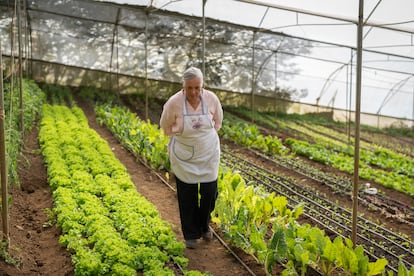
Tigre and Hannia stress that organic goes beyond simply avoiding chemicals. In the classroom they’ve set up on the farm, the couple offers lectures on their process. This includes minimal tillage, no heavy machinery, homemade fertilizer, rainwater harvesting, crop grouping, and even techniques for optimal plant growth. “Everything converges in a natural and harmonious way,” said Tigre.
Diversifying crops is crucial for soil health. Monoculture leads to soil degradation, while variety enriches it. Crop rotation also disrupts pest reproduction and drives them away. On conventional farms that grow the same crops every season, pests tend to multiply, requiring chemical treatments. Organic farming mimics nature, where everything grows in harmony.
The couple is frustrated because they haven’t been able to replicate organic production in the area. They want to convince other farmers that conventional farming is more vulnerable to climate change and unstable prices. However, this doesn’t mean that Tigre and Hannia’s organic farm is safe from these external factors. The long drought in Costa Rica has depleted their water reserves more than usual for this time of year.
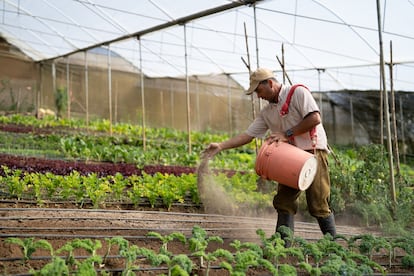
Organic farming also stands out for its recognition of the harmful effects of pesticides on both consumers and farmworkers. Cristian Rivera was once a day laborer on a conventional farm and experienced the harmful effects of chemical exposure on his health. “I couldn’t run without getting out of breath,” he said.Rivera now works at Rinconcito Orgánico, free from agrochemical exposure, and has regained his health.
A small and exclusive market
“Excuse me, do you know where Bryan’s stand is?”
“The one with Papaya? It’s over there,” said a woman, pointing to a produce stand with three dogs running around.
Papaya is not a fruit – it’s the name of one of Bryan Didier’s dogs. Didier has a stand at the Green Farmers’ Market, where only certified organic producers can sell their goods in downtown San José. Bryan’s dog is named after one of his star products. He entices buyers by offering them a taste of fresh papaya. “It really tastes different,” said Didier, who has a farm in La Fortuna, about three hours drive from San José. Since 2006, he has worked on the farm with his father, cultivating around 70 different crops.
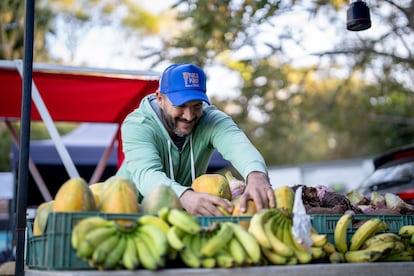
La Fortuna is an area with a mix of tourism and large-scale monoculture. Bryan’s farm is surrounded by big companies that use pesticides. To protect his land from contamination, he created a “living barrier” using green poppies. The strategy has been successful. Unlike the barren monoculture plantations, Bryan’s farm is teeming with wildlife that has naturally made its way to the area. Bryan takes pride in the sight of four sloths living in his trees. He has two helpers at the stand, where he shows an older woman the right way to eat lemon peel. He tells another customer in English about all the products available today.
You can hear a lot of English spoken at the Green Farmers’ Market, and not just by Bryan, who is half American. The market is geared to a small and exclusive slice of San José: Americans, Europeans and wealthy Costa Ricans. The farmers at this market know that they cater to customers willing to pay higher prices for organic products because of the harm caused by conventional agriculture.
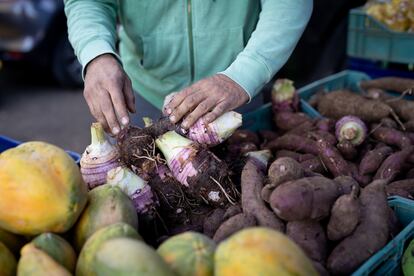
Organic farmers are unable to match the low prices offered by conventional farmers because of the $1,000 annual certification fee and cumbersome bureaucratic paperwork. The MAG can conduct surprise inspections and revoke certifications if all requirements are not met. “The government is crushing us. I wouldn’t do it again, knowing what I know now,” said Didier.
There are other problems, such as what Moisés Gómez calls “unfair competition” in the organic sector. This includes producers falsely claiming organic certification or mixing products from organic and conventional farms.
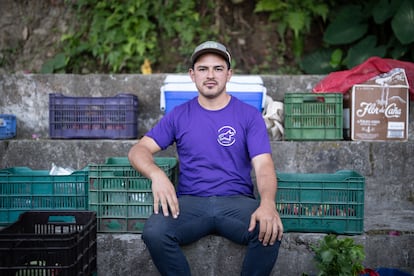
Gómez is well acquainted with this world as his entire family is involved in organic agriculture in Dota, a canton located south of San José. Alongside his parents and three brothers, they cultivate a variety of products that they sell at the Green Farmers’ Market. They begin stocking their stand before daybreak; it’s the first one you see when entering the market. Unlike Bryan, Hannia, and Tigre, who are surrounded by conventional farms, the Gómez farm is in one of the most organically productive areas of the country. He says that many of his neighbors also grow organic crops, so there is less concern about chemical contamination. But he agrees with the others that organic producers are penalized by the government instead of promoted.
Denmark is known for being the country with the highest percentage of organic agriculture, accounting for 90% of its crops. The Danish government provides subsidies and encourages organic producers, while Costa Rica heavily relies on agrochemicals. “People like things fast and easy, but they need to understand that the cheapest medicine is food,” said Gómez. “They need to understand that it’s worth the effort.”
Sign up for our weekly newsletter to get more English-language news coverage from EL PAÍS USA Edition
Tu suscripción se está usando en otro dispositivo
¿Quieres añadir otro usuario a tu suscripción?
Si continúas leyendo en este dispositivo, no se podrá leer en el otro.
FlechaTu suscripción se está usando en otro dispositivo y solo puedes acceder a EL PAÍS desde un dispositivo a la vez.
Si quieres compartir tu cuenta, cambia tu suscripción a la modalidad Premium, así podrás añadir otro usuario. Cada uno accederá con su propia cuenta de email, lo que os permitirá personalizar vuestra experiencia en EL PAÍS.
¿Tienes una suscripción de empresa? Accede aquí para contratar más cuentas.
En el caso de no saber quién está usando tu cuenta, te recomendamos cambiar tu contraseña aquí.
Si decides continuar compartiendo tu cuenta, este mensaje se mostrará en tu dispositivo y en el de la otra persona que está usando tu cuenta de forma indefinida, afectando a tu experiencia de lectura. Puedes consultar aquí los términos y condiciones de la suscripción digital.
More information
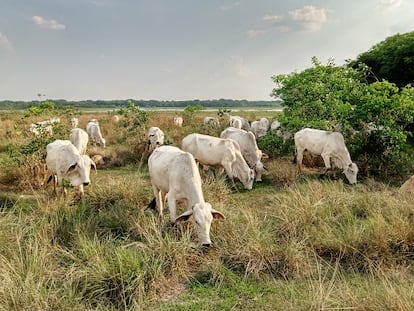
Sustainable meat: Bolivia works to reform livestock operations that trigger deforestation
Últimas noticias
Most viewed
- Alain Aspect, Nobel laureate in physics: ‘Einstein was so smart that he would have had to recognize quantum entanglement’
- David King, chemist: ‘There are scientists studying how to cool the planet; nobody should stop these experiments from happening’
- Maps of the US attack on Venezuela: Targets, airspace and deployed fleet
- Key points of the military attack on Venezuela: Early morning bombings and a ‘captured’ president
- Trump says Washington will control Venezuela until there is ‘a safe transition’
